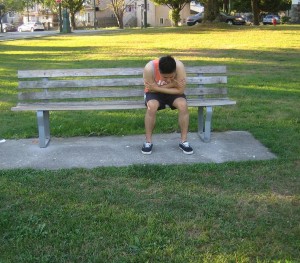When an individual is exposed to very cold temperatures, the skin and the underlying tissues can freeze, resulting to frostbite. The commonly affected areas by frostbite include the feet, hands, ears and nose. Once skin appears whitish or grayish-yellow, very cold to the touch and has a hard or waxy feel, it indicates frostbite. In some cases, the skin can itch, feel numb or burn. Severe frostbite can cause hardening and blistering. The moment the area defrosts, the affected area becomes reddish in color and painful.

Causes of frostbite
Exposure to extremely cold temperatures for extended periods can lead to frostbite. An individual is at higher risk as the temperature drops and the wind increases. The risk for frostbite increases if the circulation is impaired. Individuals who are suffering from diabetes or peripheral vascular disease as well as those using beta-blockers are more susceptible.
Symptoms
The common indications of frostbite include progressive numbness and loss of sensitivity to touch. The area that is affected will start to tingle or feel as if it is burning. Once the condition worsens, the pain will start to vanish or eventually disappear.
As for the skin, it will change color when exposed to extreme cold. It will start to blanch, exude a reddish color and eventually white-purple if allowed to freeze. Majority of individuals claim that the affected part feels wooden and it has a wooden-like texture. Always remember that frostbite can affect any body part but the commonly affected areas include the nose, ear rim and lobes, toes and fingertips.
In mild cases, complete recovery can be expected if early treatment was provided. As for severe cases of frostbite, it can lead to infection or gangrene in which some body tissues die due to the lack of blood supply.
[youtube url=”http://www.youtube.com/watch?v=5UP0k0b2LBQ”]Steps to follow when treating frostbite
Always remember that the key when treating frostbite is by gradually warming the affected skin.
- Protect the skin from further exposure especially if outside. Hands should be tucked into the armpits. The face, ears and nose should be protected by covering with dry, gloved hands. Avoid rubbing the affected area and do not rub snow on the skin with frostbite.
- If outside, go inside to avoid the cold. Once indoors, remove wet clothes.
- Steadily warm the areas affected by frostbite. With warm water at 104-107.6 F (40-42 C), immerse the feet or hands. Cover other areas with a warm blanket. Avoid using direct heat such as a fireplace, heat lamp or heating pad since they can cause burns before the numb skin can feel them.
- Avoid using feet or toes with frostbite if possible since it will only cause more damage to the tissues.
- In case the affected body parts will freeze again, avoid thawing them. If they are already thawed, simply cover them so that they will not become frozen again.
In case the numbness or sustained pain persists during warming or if blisters start to develop, it is important to seek emergency first aid right away.